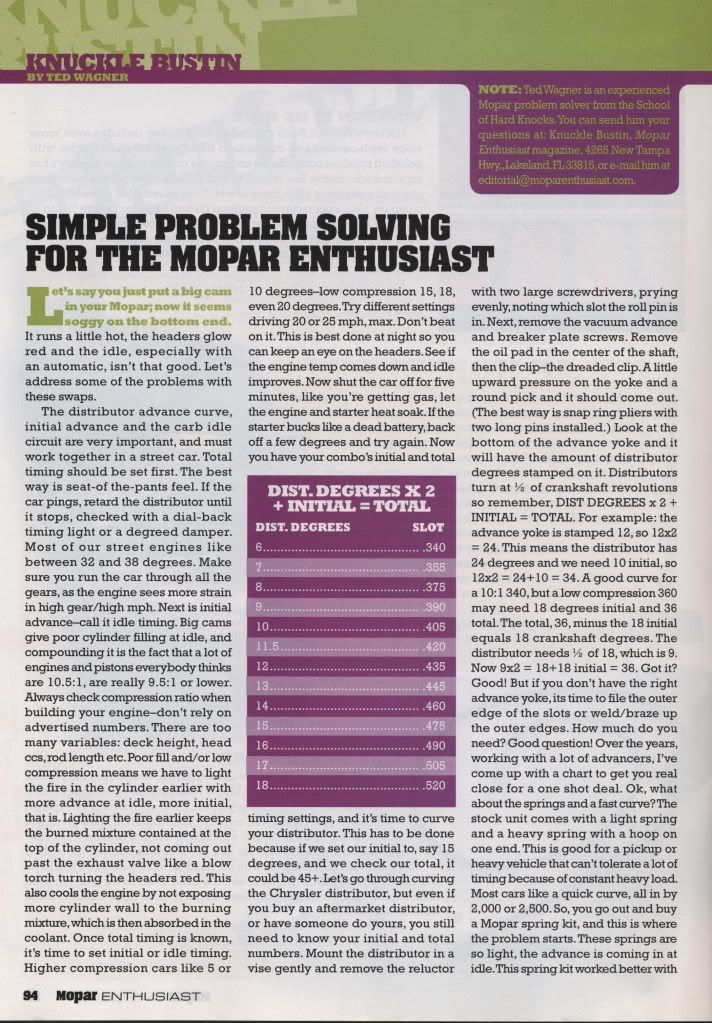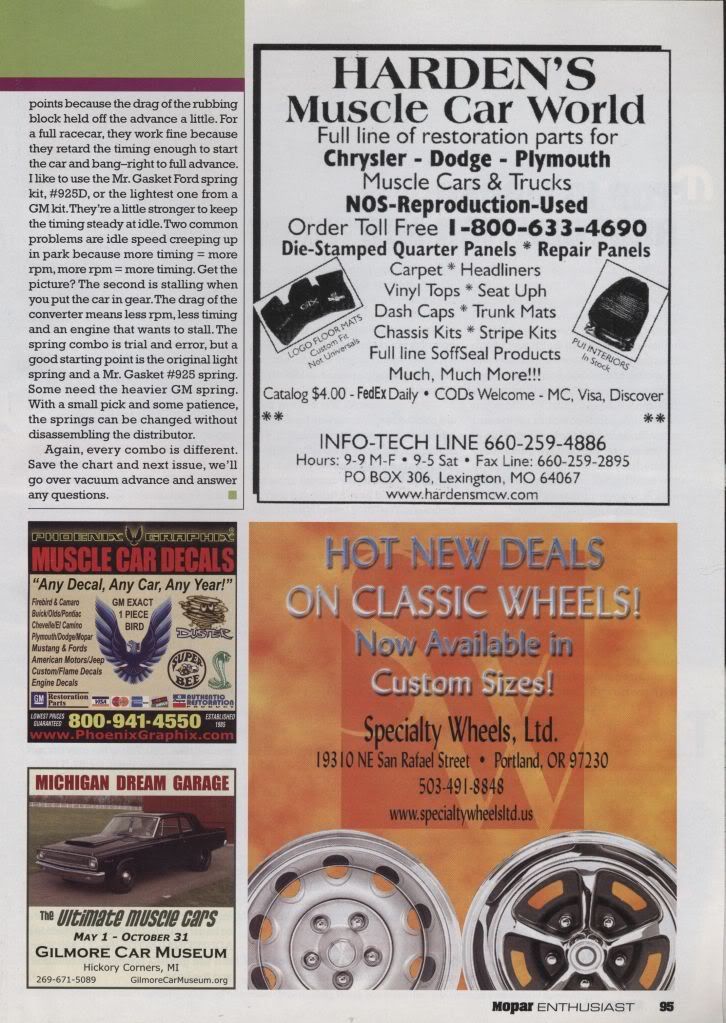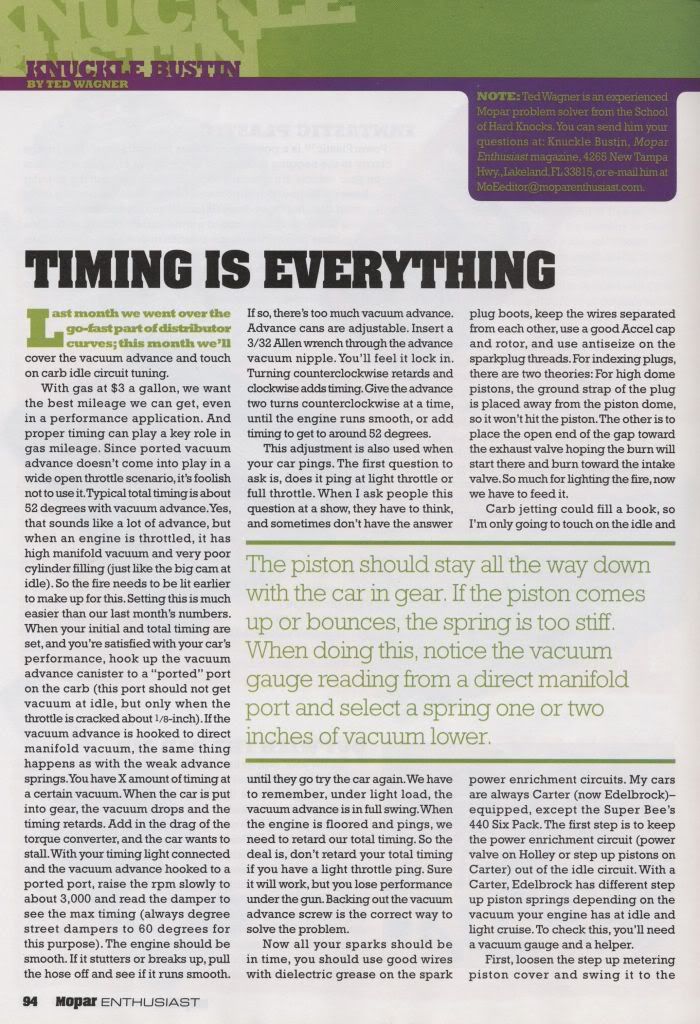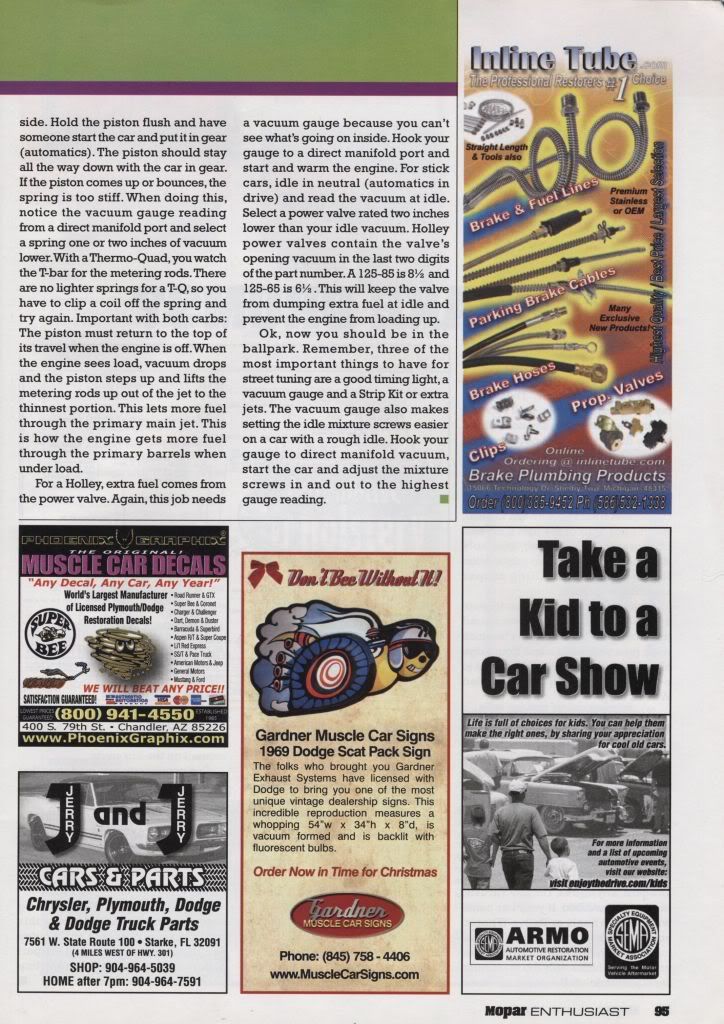Dredging this thread back up because it is a good one and right in line with my topic. So I finally broke down and bought my own timing gun, should have done it a couple years ago. But there's a lot of stuff I should have done years ago, I suppose you guys know the feeling.
I went in and double checked the Scamp's timing (with LA360) because I thought I had the initial timing set at 8° ... my target was to set total timing at 35°. Well I bought the digital timing light that can dial back the timing by 0.1° increments.
When I first checked it with the timing light set at 0.0° offset, sure enough it looked about like 8° again. Now let me mention that what I'm looking at is timing tape that is somewhat reflective, and the timing marks on the block are blue. I should go in and paint the 0° mark white. Things are not easy to see. But not impossible.
However, when I dialed the timing light back to 8° so that the 0° marks would line up, I could see that I was indeed OFF with my previous measurement. So I played with the timing buttons and when I could finally distinguish as close to the 0° marks being lined up, I was at ~12° initial timing. And ~37.5° total timing. With all in being at about 2,500 rpm.
I'm going to say that those numbers are within ±1°. You guys would have to search (and I don't expect you too), but I've always said that El Scampo runs REAL GOOD. It hit 99.01 mph in the quarter mile with little bity 14" 215's (Pizza cutter) tires, while poodling off the line (due to the tires) with a 2.181 sixty foot time (slow). So, after I get it rolling, it pulls pretty darn good on those skinny tires. But not only that, the throttle response in just around town driving is great.
I see various recommendations of 34° to 36° and sometimes higher than that depending on mods. Since I know this 360 has a mild cam, I decided to just leave it where it is. I never hear any pinging, and I run 90 octane no ethanol fuel 80% of the time, and 89 octane no ethanol some too. Every once in a blue moon, when I'm just going to blow a tank of fuel away on the interstate, I'll run 87 octane no ethanol from Racetrac gas station (cause it's cheap). And I don't hear any knock.
I wanted to post this, just for others seeking timing info like the O.P. And I wanted to ask:
DO YOU GUYS THINK 37.5° TOTAL TIMING IS TOO AGRESSIVE?
7milesout




















